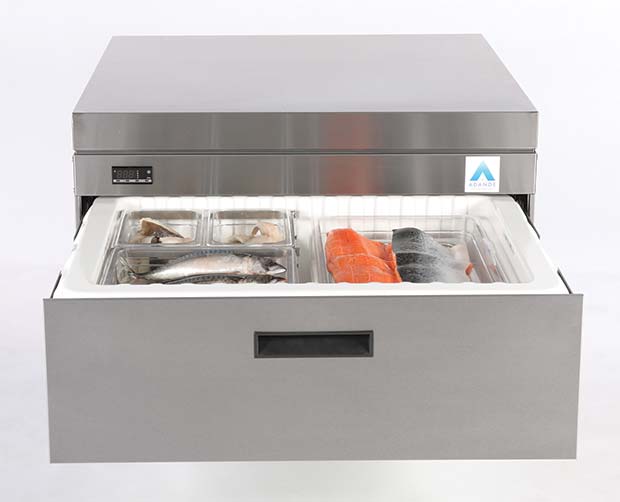“There is considerable confusion in the industry, regarding the energy efficiency, temperature accuracy and performance of foodservice and food retailing refrigeration equipment. This uncertainty has been exacerbated by the introduction to the marketplace of copycat refrigerated drawer systems. These products purport to share the characteristics of Adande’s patented design, but none of them deliver the same unique insulated container ‘hold the cold’ technology.”

These are the challenging words of Adande’s Sales Director, Karl Hodgson, who believes that many refrigeration equipment manufacturers are selling their customers short when it comes to energy efficiency and performance claims. He cites product design, including runners mounted on the outside of drawers to eliminate the impact of moisture and freezing and high integrity robust horizontal seals as features that set the Adande apart from other refrigeration equipment. He also highlights the internal location of the condenser unit, which improves efficiency and reduces duty on the compressor, as a major benefit of the Adande design.
In an attempt to set the record straight, Adande commissioned an independent third party to compare the performance of its VCS1 single drawer model against a similar model from another manufacturer (model A). Adande also conducted in house tests, under climate class 4 conditions, comparing its VCS1 model with a major manufacturer’s refrigerated drawer system (model B). All products used in the trials, were brand new, ex factory models.
Trials with the fridges in chiller mode confirmed that the Adande used 55% less energy per year than model A and 73% less energy per year than model B. In freezer mode, the Adande used 46% less energy per year than model A and 63% less energy per year than model B. It was also noted that the Adande offered additional energy savings of 19% with the hydrocarbon refrigerant option, which is available at no extra cost.
In terms of stable and accurate holding temperatures, in chilled mode the warmest temperature measured in the Adande was 2.5ºC above set point, whilst the warmest temperatures for models A and B were 11.8ºC and 7.0ºC above set point, respectively. When operating as freezers, the warmest temperature measured in the Adande was 4.9ºC above set point, whilst the warmest temperatures were 14.7ºC and 8.0ºC above set point for models A and B, respectively.
All three models under test had a similar footprint, but the Adande scored well in terms of storage volume, with 11.8% more storage volume than model A and 46.5% more storage volume than model B.
Adande had previously undertaken trials, at Westminster Kingsway College, comparing an Adande refrigerated drawer unit with a conventional under counter door fridge in the storage of fresh fish, including haddock, salmon and prawns. The tests concluded that the Adande significantly outperformed its competitor in terms of prolonging the quality and appearance of the fish. The trials also established that the average weight loss, due to dehydration, of fish stored in the conventional fridge was 3.5 times higher than product held in the Adande. Taking into account the reduced yield from shrinkage and the wastage of inedible product, the monetary value of fish stored in the conventional fridge had been reduced by 33.6% at the end of the trial. By comparison, the reduction in monetary value of the fish stored in the Adande was just 1.5%.
A copy of Adande’s ‘Imitated, but never equalled’ literature, detailing comparisons with other fridge models, is available on request, as is the report on the Westminster Kingsway College fresh fish trials.
Tel: 0844 376 0023
Email: info@adande.com




Comments are closed.